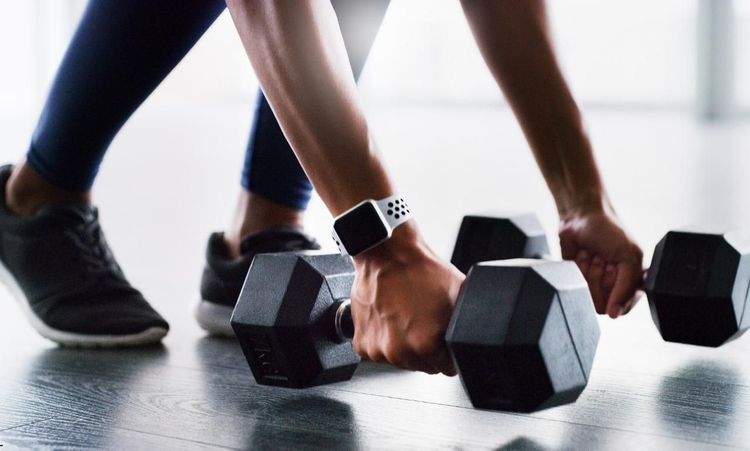Ever noticed how your energy shifts throughout the month? Some days you crush that HIIT class. Other days getting off the couch feels impossible. These fluctuations aren't random. They actually follow a pattern linked to your menstrual cycle. Cycle-syncing workouts have gained popularity among women seeking better fitness results. This approach isn't just another trend. It's rooted in understanding how hormonal changes affect physical capabilities. Many women report fewer injuries and better performance when they match workouts to their cycle phases. The concept might sound complicated at first. Trust me, it's simpler than you think. By the end of this article, you'll understand how to work with your body instead of against it. Let's explore how syncing your workouts can transform your fitness journey.
What Is Cycle Syncing?
Cycle syncing means adapting your fitness routine to match your menstrual cycle phases. Your hormone levels change throughout your cycle. These hormones affect your energy, recovery time, and exercise performance. Smart training acknowledges these natural shifts. The typical menstrual cycle spans about 28 days. It consists of four main phases: menstrual, follicular, ovulatory, and luteal. Each phase brings different hormone levels and physical capabilities. What works during one phase might feel impossible during another. During some phases, your body naturally handles high-intensity workouts better. Other times, gentle movement yields better results. Ignoring these patterns can lead to frustration and burnout. Working against your hormones wastes precious energy. Cycle syncing isn't limited to exercise. Many women also adapt nutrition and work schedules accordingly. The approach honors the body's natural rhythms. It turns monthly fluctuations from obstacles into opportunities for optimization.
Who Can Benefit from Cycle Syncing?
Women of reproductive age can generally benefit from cycle-syncing workouts. Athletes often notice the biggest improvements in performance. They report better recovery and fewer injuries when training aligns with hormonal patterns. Weekend warriors and fitness enthusiasts see benefits too. Anyone experiencing period symptoms might find relief through proper exercise timing. Heavy periods, cramps, and fatigue can improve with cycle-appropriate movement. Women trying to build strength or endurance should definitely consider this approach. Their goals become more achievable with hormone-optimized training. Those with irregular cycles can still implement cycle syncing. They might need to pay closer attention to physical cues. Energy levels, sleep quality, and mood provide helpful indicators for workout selection. The practice encourages body awareness regardless of cycle regularity. Women on hormonal birth control may experience different patterns. Their hormonal fluctuations are typically less pronounced. They can still benefit from listening to their bodies. The key remains matching workout intensity to how you actually feel.
Cycle Syncing Workout Chart
Menstrual Phase (Days 1-5)
The menstrual phase begins with your period. Your hormone levels reach their lowest point now. Energy typically dips during these days. Light movement often feels best during this time. Walking, gentle yoga, and stretching support this phase perfectly. These activities promote blood flow without depleting precious energy. Listen carefully to your body's needs. Rest completely if cramps or fatigue feel overwhelming. Short meditative sessions can replace intense workouts here. Your body diverts energy toward menstruation. Honoring this process helps prevent exhaustion later in your cycle. Think of this phase as your recovery week.
Follicular Phase (Days 6-14)
The follicular phase brings rising estrogen levels. Many women experience an energy boost during this time. Your body becomes more receptive to new challenges now. This makes it perfect for trying new workout classes. Strength training works exceptionally well in this phase. Your pain tolerance increases with estrogen. Progressive overload and challenging workouts fit naturally here. Your body recovers faster from exercise during these days. High-intensity interval training produces excellent results now. Your muscles adapt well to stress during the follicular phase. Energy peaks make cardio feel more manageable too. This phase welcomes intensity if you're feeling strong.
Ovulatory Phase (Days 15-17)
During ovulation, your estrogen reaches its highest point. Energy levels typically peak during these few days. Many women report feeling their strongest and most confident now. This makes it an excellent time for performance. High-intensity workouts yield great results during ovulation. Your body temperature rises slightly, improving muscle function. Group fitness classes feel particularly rewarding now. Social energy complements physical capabilities during this phase. Sprint work, power lifting, and intense cardio align perfectly here. Your body handles intensity well during ovulation. Athletic performance often reaches its zenith. Consider timing competitions or personal records around this phase.
Luteal Phase (Days 18-28)
The luteal phase introduces rising progesterone alongside estrogen. This hormonal shift affects your metabolism and temperature regulation. Early luteal phase maintains some of your previous energy. Late luteal brings premenstrual changes. Moderate strength training works well during early luteal days. Steady-state cardio can feel better than sprint work now. Your body transitions toward conservation mode. Intensity naturally decreases as your period approaches. Late luteal phase calls for more gentle movement. Yoga, pilates, and light walking match your energy better now. Your body retains more water during this time. Lower impact exercises prevent discomfort from bloating or breast tenderness.
How to Get Started with Cycle Syncing Your Workouts
Begin by tracking your menstrual cycle for a few months. Note physical and emotional changes throughout each phase. Many apps can help you monitor these patterns. Paper calendars work perfectly fine too. Pay attention to your energy levels during different workouts. Which exercises feel terrible during your period? When do you crush those HIIT sessions? Record these observations alongside your cycle data. Patterns will emerge over time. Start small with cycle syncing adjustments. Perhaps skip intense classes during your period. Maybe schedule challenging workouts during your follicular phase. Small changes yield noticeable results. The approach should reduce struggle, not create new pressures. Listen to your body above all else. Some days won't match the expected pattern. Honor how you actually feel rather than following rigid rules. Your individual experience matters most. The framework offers guidance, not commandments.
Benefits of Cycle-Syncing Workouts
Working with your hormones improves exercise results dramatically. Many women report faster strength gains using this approach. Their bodies recover better between sessions. Training effectiveness increases without additional gym time. Injury rates often decrease with cycle-synced workouts. You avoid pushing too hard during vulnerable phases. Recovery improves when intense training aligns with optimal hormonal states. This approach promotes longevity in fitness activities. Menstrual symptoms may improve with phase-appropriate exercise. Many women experience reduced cramps and mood swings. Their energy becomes more consistent throughout the month. The approach transforms the menstrual cycle from obstacle to advantage. Body composition changes can happen more efficiently. Working with your metabolism's natural fluctuations optimizes results. Fat loss and muscle gain become more strategic. The approach acknowledges your body's changing needs for fuel and recovery.
Cycle Syncing Looks Different for Everyone
No two menstrual cycles look exactly alike. Your experience might differ significantly from your friends'. Some women have shorter luteal phases. Others experience extended follicular phases. Your unique pattern matters most. I started cycle syncing after years of fighting monthly energy crashes. My workouts felt impossible during certain weeks. I blamed my motivation rather than my hormones. Learning to match my training intensity with my cycle changed everything. My heaviest lifting now happens during my follicular and ovulatory phases. I schedule yoga and walking during my period instead. The late luteal phase means moderate cardio for me. This personalized approach eliminated my fitness frustration. Women with medical conditions need individualized approaches. PCOS, endometriosis, and other disorders affect hormonal patterns. Working with healthcare providers helps create appropriate modifications. Medical supervision ensures safety while implementing these strategies.
Conclusion
Cycle-syncing workouts offer a revolutionary approach to female fitness. This method transforms monthly hormonal fluctuations from obstacles into advantages. Your menstrual cycle provides valuable information about optimal training times. Using this knowledge improves results with less struggle. Starting this practice requires simple cycle tracking and body awareness. The benefits include better performance, fewer injuries, and reduced symptoms. Many women report feeling more connected to their bodies through this approach. The practice honors female physiology rather than working against it. Remember that your experience remains unique. Use the guidelines as a starting point for personalization. Your body will tell you what works best. That communication becomes clearer with practice and attention. Trust your instincts alongside the science. Consider giving cycle syncing a try for three months. Notice the differences in how you feel and perform. The approach might transform your relationship with fitness entirely. Your monthly cycle could become your secret weapon for athletic achievement.




